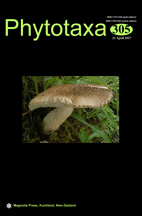Abstract
The patterns of morphological variation and distribution of the rare Central European endemic Spergularia echinosperma were investigated. Morphometric analyses revealed the existence of two distinct morphotypes differing each other mainly in seed color, which is either brown or black. Other differences are in density of the seed surface papillae, height and shape of the papillae, seed width, pedicel/capsule and internode/leaf ratios, and leaf length. A geographic separation of the morphotypes also exists. The black-seeded morphotype occurred nearly exclusively in drained fishponds in the south-western part of the Czech Republic, the brown-seeded morphotype was found in drained fishponds in the eastern part of the Czech Republic and in alluvial pools and river deposits of the Elbe River (Germany). We hypothesize that the black-seeded morphotype may have been indigenous in former natural lakes which were widespread in the SW-Czech Republic and they were frequently transformed into fishponds. The brown-seeded morphotype may have its origin in river alluvia of the Elbe (Germany) and possibly also of other rivers in the Czech Republic. Since the two morphotypes are morphologically and geographically well separated, we propose to describe the brown-seeded morphotype as a new subspecies for science, S. echinosperma subsp. albensis subsp. nov.

